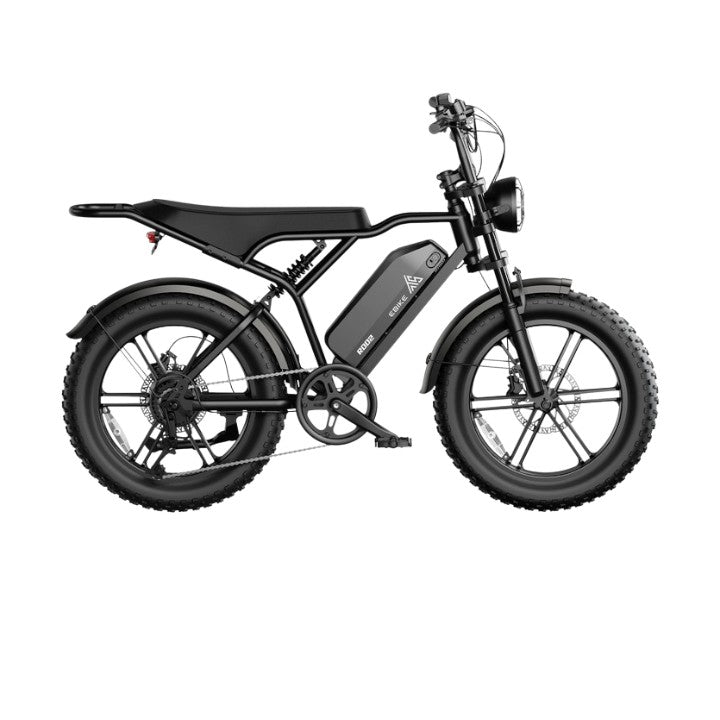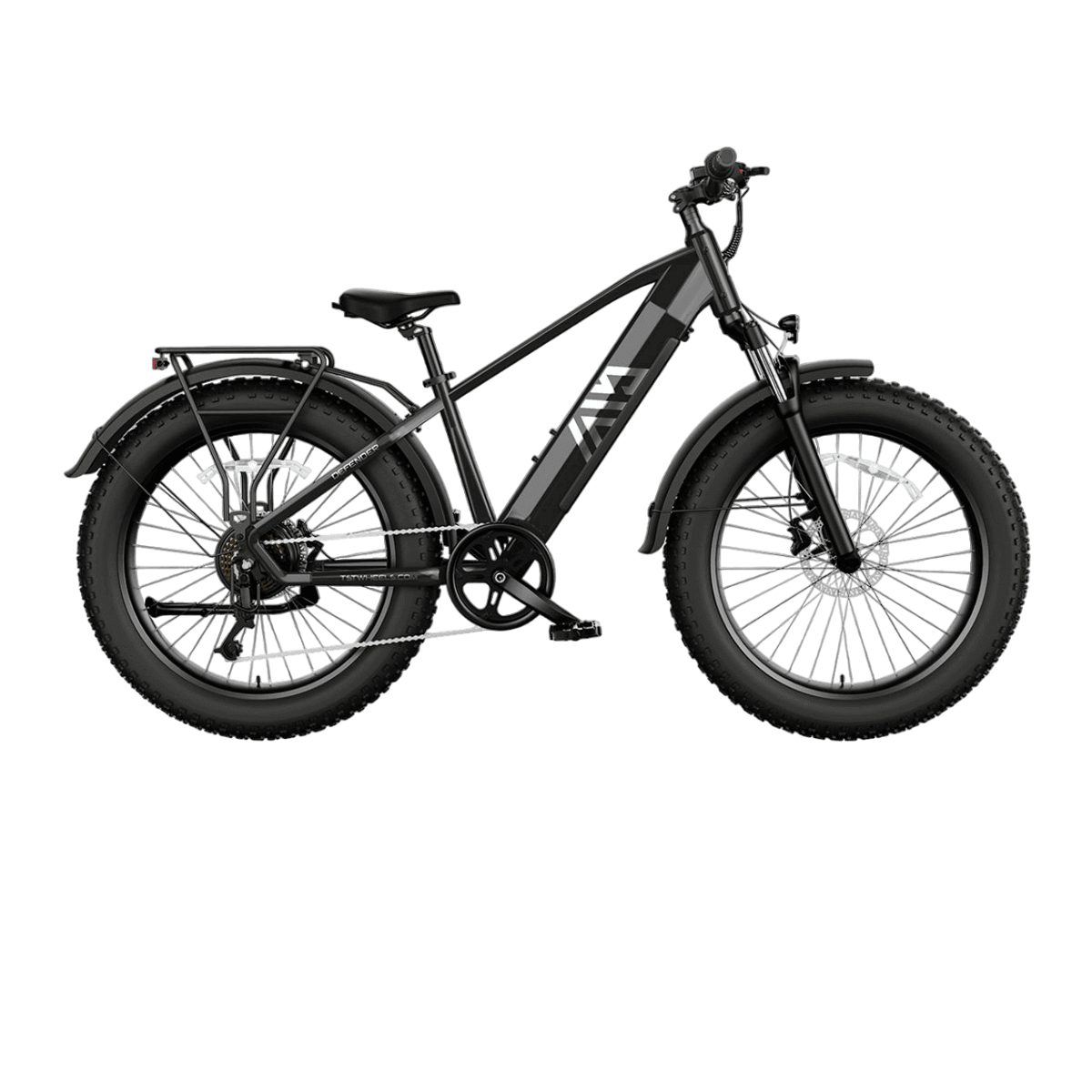In a bold move that signals a strong commitment to sustainable transportation, Washington State has launched an impressive initiative, offering $4 million in instant rebates to incentivize residents to purchase electric bicycles. This program, under the umbrella of the “We Bike” initiative from the Washington State Department of Transportation, represents not only a significant financial boost for those looking to adopt a greener lifestyle but also a forward-thinking strategy to reduce traffic congestion, cut down on urban carbon emissions, and improve public health.
A Closer Look at the We Bike Initiative
Washington State’s decision to allocate such a large sum of money to promote e-bikes comes at a time when many communities are seeking innovative solutions to longstanding urban challenges. The “We Bike” program is designed to offer immediate financial relief in the form of rebates, making e-bikes more financially accessible. By easing the initial cost barrier, the state is encouraging more residents to transition to electric bicycles, a mode of transportation that offers significant advantages over conventional cars in terms of efficiency, environmental impact, and urban mobility.
Key Details of the Program
- Rebate Amounts and Eligible Uses:
- Instant rebates are available at either $300 or $1,200 per person.
- The funds can be used toward the purchase of electric bicycles and some additional equipment needed to use them.
- Application Window:
- The application website opens at 7 a.m. Wednesday, April 9, and closes at noon on Wednesday, April 23.
- Eligibility Requirements:
- Applicants must be residents of Washington.
- Applicants must be at least 16 years old.
- Only one rebate is available per household.
- Required Application Information:
- Applicants need to provide their physical address, email address, phone number, and demographic information as required by the state.
- Voucher Distribution and Income Considerations:
- The state expects to distribute approximately 10,000 vouchers.
- Applicants must meet certain income qualifications, with 60% of the rebates targeted toward low-income households.
- Rebate Usage Period:
- Rebates must be used within 45 days of receipt or by June 30, whichever comes first.
- For further details, please click here.
In essence, this ebike incentive program is not just a financial measure—it is a strategic push towards a sustainable future, aligning with broader environmental goals and paving the way for innovations in personal transportation.
The Broader Implications of E-Bike Incentives
E-bike incentives like the one offered by Washington State are more than just a temporary financial boost. They are part of a global trend where cities and governments are rethinking mobility. Let's explore how this program fits into the larger context of sustainable urban planning.
Environmental Benefits
Switching from traditional, fuel-based vehicles to e-bikes has significant environmental advantages:
-
Reduced Carbon Emissions: E-bikes produce zero tailpipe emissions, which can help cities lower their overall carbon footprint. With transportation being one of the leading contributors to urban air pollution, increased e-bike usage can markedly improve air quality.
-
Energy Efficiency: E-bikes consume a fraction of the energy required by cars or motorcycles. This efficiency not only reduces household energy costs but also contributes to broader energy conservation efforts.
-
Noise Pollution Reduction: Electric bikes operate much more quietly than gas engines, resulting in a noticeable decrease in urban noise pollution.
Health and Lifestyle Improvements
Beyond environmental considerations, there are numerous personal health benefits for citizens who switch to e-bikes:
-
Physical Activity: Though electric assistance reduces the physical effort compared to traditional cycling, riders still engage in moderate physical activity. This activity can contribute to overall cardiovascular health and improved physical fitness.
-
Stress Reduction: Urban traffic congestion and the stress of driving can be significant contributors to mental health challenges. Riding an e-bike offers a refreshing alternative that can lead to reduced stress levels.
-
Community Engagement: With more residents on e-bikes, there is a higher chance for spontaneous social interactions, leading to stronger community bonds and a more vibrant public space.
Economic Impact
Implementing a robust ebike incentive program such as this one has multiple economic benefits:
-
Stimulating Local Businesses: As demand for e-bikes rises, local bike shops and related businesses (from repair services to accessory sales) are likely to see increased patronage.
-
Job Creation: The expansion of the e-bike market will drive employment opportunities in sales, service, manufacturing, and infrastructure development.
-
Cost Savings for Households: While the initial purchase price of an e-bike might seem steep, the long-term savings in fuel, maintenance, and parking fees can be significant. Instant rebates further reduce the financial hurdle, enabling more residents to make the switch.
How Washington State’s Program Exemplifies Innovation in Public Policy
The Washington State initiative is a reminder that smart public policy can drive real and lasting change. When governments directly support sustainable mobility through incentives, they not only help individuals with immediate costs but also send a powerful signal about the direction of urban development.
A Model for Future Initiatives
The structure of this program serves as an excellent model for other states and cities:
-
Direct Financial Support: Instant rebates eliminate the delayed gratification that often discourages consumers from making eco-friendly investments.
-
Broad Eligibility: By targeting a wide range of potential users—from daily commuters to environmentally conscious citizens—the program maximizes its social and economic reach.
-
Promotion of Local Culture and Infrastructure: Washington State is known for its beautiful landscapes and progressive cities. Encouraging e-bike usage aligns perfectly with the state’s image, promoting both environmental stewardship and an active lifestyle.
Lessons for Other Regions
Other regions can take note of several key elements:
-
Immediate Incentives Yield Quick Adoption: Financial incentives that are provided upfront tend to lead to quicker adoption rates.
-
Integration with Public Transportation: E-bikes can complement existing public transportation networks, filling gaps where buses and trains are less frequent.
-
Scalability and Adaptation: While Washington State’s program is tailored to its specific needs, its fundamental structure can be adapted to suit other locales. The success seen here could inspire nationwide initiatives that similarly aim to boost the use of clean, efficient transportation.
The Role of Technology and Infrastructure in E-Bike Adoption
Innovation is rarely isolated to one area; it often drives progress across multiple sectors. As more consumers adopt e-bikes, there is an inevitable need to upgrade infrastructure and integrate technology to support this shift.
Infrastructure Enhancements
To truly harness the potential of e-bikes, cities must invest in:
-
Dedicated Bike Lanes: Expanding bike lane networks ensures that e-bike riders have safe and efficient routes, separated from vehicular traffic. This infrastructure is critical for protecting riders and encouraging more people to choose biking over driving.
-
Charging Stations: As e-bikes rely on battery power, the installation of accessible charging stations throughout urban centers can alleviate range anxiety and encourage longer trips.
-
Smart Traffic Management: Integrating e-bike data into smart city systems can help manage traffic flow more effectively. For instance, real-time data on bike traffic can be used to optimize traffic light sequences or reroute congestion away from busy corridors.
Digital Innovations
The intersection of technology and biking is particularly exciting:
-
Mobile Apps and Incentives: Cities can develop integrated apps that not only provide route information and safety tips but also allow users to track their rebate status or earn additional rewards for frequent biking.
-
Data-Driven Policy Making: By analyzing data collected from e-bike users—such as travel patterns and usage frequency—municipalities can better plan future infrastructure projects and adjust policies to match evolving needs.
How to Take Advantage of the E-Bike Incentive
For anyone considering an e-bike purchase, Washington State’s rebate program offers an ideal opportunity. Here’s a practical guide to getting started:
Step-by-Step Guide
-
Research E-Bike Options:
Begin by exploring various e-bike models that align with your needs—whether you’re commuting daily or using the bike for leisurely rides. Compare features such as battery range, motor power, and design aesthetics. Look for reviews and ratings online to ensure you invest in a reliable model. -
Check Eligibility Criteria:
Make sure you meet the program’s eligibility requirements. Usually, these programs are open to residents of the state, certain age groups, or sometimes specific categories like students or seniors. Detailed criteria are typically provided on the program’s official website. -
Visit Authorized Retailers:
Many programs operate through a network of approved retailers. These retailers are not only vetted for quality but also have the necessary systems in place to process the instant rebates. Ask your local store about participating in the program. -
Complete the Purchase and Rebate Process:
Once you’ve selected your e-bike, complete the purchase at an authorized location. The rebate should be processed instantly during the transaction, reducing the amount you need to finance upfront. This instant discount makes it easier for customers to commit to the purchase decision. -
Spread the Word:
After you’ve benefitted from the rebate, consider sharing your experience. Whether it’s through social media, local community boards, or even writing a review on TSTebike, your positive feedback can encourage others to join the sustainable transportation movement.
Tips for Maximizing the Benefits
-
Early Adoption:
Programs like these often have limited funds available. Taking prompt action ensures you’re among the first to benefit from the incentive. -
Stay Informed:
Regulations and incentives can evolve. Subscribe to newsletters or follow official state transportation pages to keep abreast of any changes or extensions to the program. -
Combine with Other Initiatives:
Consider pairing your new e-bike with other eco-friendly practices, such as using bike-sharing programs or carpooling, to maximize your environmental impact and personal savings.
The Future of E-Bike Incentives
As cities worldwide evolve, initiatives like Washington State’s $4 million rebate program represent the future of urban transportation. The innovative use of ebike incentives serves as a prototype for how public policy, when aligned with sustainable practices and modern technology, can drive profound changes in social behavior and infrastructure development.
A Growing Trend
In recent years, there has been an observable increase in government-supported incentives aimed at making sustainable transportation more accessible. From low-interest loans for green vehicles to tax breaks on environmentally friendly purchases, the trend is clear: cities are investing in a future where personal mobility does not come at the expense of the environment.
Embracing a Sustainable Future
The growth of the e-bike market reflects a broader shift in consumer attitudes. People today are not only environmentally conscious but also seek efficiency, convenience, and health benefits in their daily commute. E-bikes uniquely combine all these advantages and have quickly become an integral part of smart urban transport solutions. As this evolution continues, we can expect to see additional programs, collaborative industry partnerships, and innovations in battery technology that make e-bikes even more accessible and reliable.
Conclusion
Washington State’s $4 million ebike incentive program is more than just a rebate; it’s a catalyst for change that reinforces a commitment to sustainable transportation and urban livability. By lowering the financial barriers to e-bike ownership, the state is empowering its residents to make smarter, greener choices that benefit both individual health and the environment as a whole.
This initiative serves as a shining example of how public policy can merge with technological advancements and community engagement to create a robust, forward-thinking transportation network. As more states and cities adopt similar measures, we can look forward to a future where the roads are filled with clean, quiet, and efficient electric bicycles—a future that prioritizes the well-being of both people and the planet.
At TSTebike, we celebrate and support innovations that drive the e-bike revolution. We invite our readers to explore how these incentives not only make financial sense but also represent a visionary step towards a cleaner, healthier, and more connected world. If you’re considering making the switch to an e-bike, now might be the perfect time to take advantage of these incentives and join the sustainable transportation movement.
Stay tuned to our blog for more updates on the latest in e-bike technology, policy developments, and success stories from communities nationwide as we continue to track the ripple effect of initiatives like this inspiring Washington State program.






Leave a comment
All comments are moderated before being published.
This site is protected by hCaptcha and the hCaptcha Privacy Policy and Terms of Service apply.